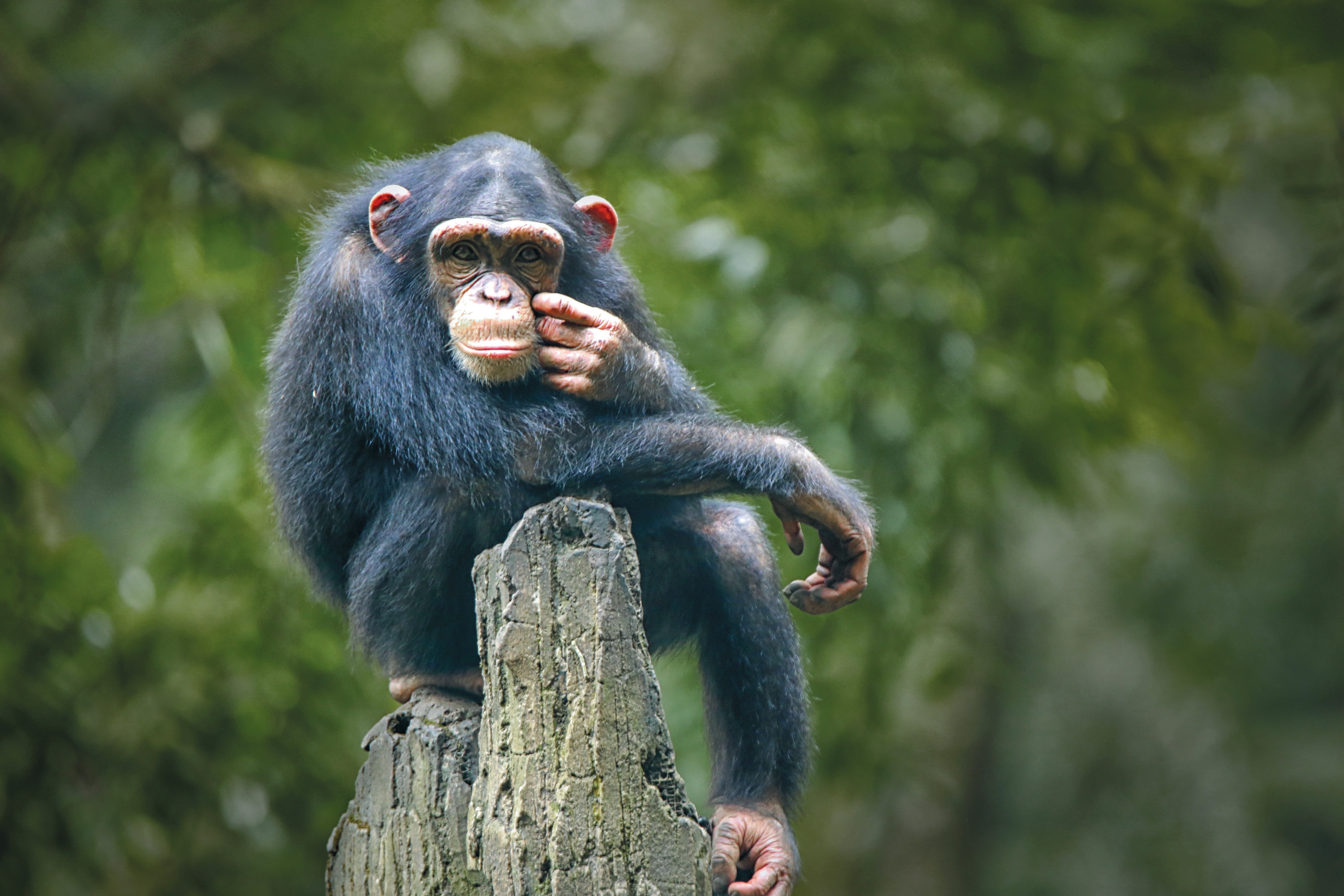Monkey See, Monkey Remember?
Christopher Krupenye ’11 proves humans’ closest relatives can recognize friends they haven’t seen for decades.
The 15 chimpanzees who live at Scotland’s Edinburgh Zoo—Louis, Lucy, Eva, Sophie, Lianne, Heleen, Qafzeh, Kilimi, Rene, Paul, Frek, Edith, Liberius, Velu and Masindi—see more than 1,500 visitors every day. For the most part, they ignore their human admirers and simply go about their everyday chimp lives.
But when scientist Christopher Krupenye ’11 and his research colleagues arrive at the zoo, the reaction is noticeably different. The chimps they’ve met during previous visits will come right over, gesture and even try to communicate with these particular humans.
“Everyone I know who works with apes has had this experience where you go back to these places, sometimes years later, and it’s very apparent that the individuals that you bonded with are behaving very differently toward you than they are toward the average visitor to the zoo. They seem excited to see you,” Krupenye says.
“That experience has given us the impression that they must remember us, that we have this relationship that’s transcending these long periods of absence.”
But can great apes really recognize individuals they haven’t seen for years? How long does that social memory last? And what might that tell us about the origins of social memory in humans?
Those are the types of questions that have been driving Krupenye’s research into the social and cognitive abilities of humans’ closest relatives for more than a decade. After earning a Ph.D. in evolutionary anthropology from Duke University, he completed postdoctoral research at the Max Planck Institute for Evolutionary Anthropology, the University of St. Andrews and Durham University. In 2022, he joined the faculty at Johns Hopkins University, where he is an assistant professor of psychological and brain sciences and director of the Social & Cognitive Origins research group.
To prove his hunch that great apes do remember individuals, Krupenye teamed up with other researchers from around the world to conduct a study with the chimpanzees and bonobos at the Edinburgh Zoo, the Planckendael Zoo in Belgium and the Kumamoto Sanctuary in Japan.
“All of our research is voluntary and noninvasive,” Krupenye says. “The apes we work with live in normal social groups. When we want to do studies, the keepers call them by name into a testing area. If they want to come in, they do. And they usually do—they seem to really enjoy it.”
In this case, while the apes sipped diluted juice from a straw, Krupenye and his team tracked their eye movements as they looked at side-by-side photographs of two members of their own species—a former groupmate who had either left the zoo or died and an individual completely unknown to the ape.
“If they don’t recognize the former groupmate, they should treat them the same as the stranger, and we should see equal attention or random attention to the two pictures,” Krupenye explains. “But if they do recognize those individuals, then we expect them to spend more time looking at their former groupmates, just as you might if you passed someone you recognized on the street and did a double take.”
The researchers found the apes did indeed look significantly longer at the individuals they’d once known. And while that didn’t surprise the scientists, they were excited to find that the social memory lasted a very long time—one bonobo, 46-year-old Louise, even recognized her sister, Loretta, and her nephew, Erin, even though she hadn’t seen either of them in 26 years.

